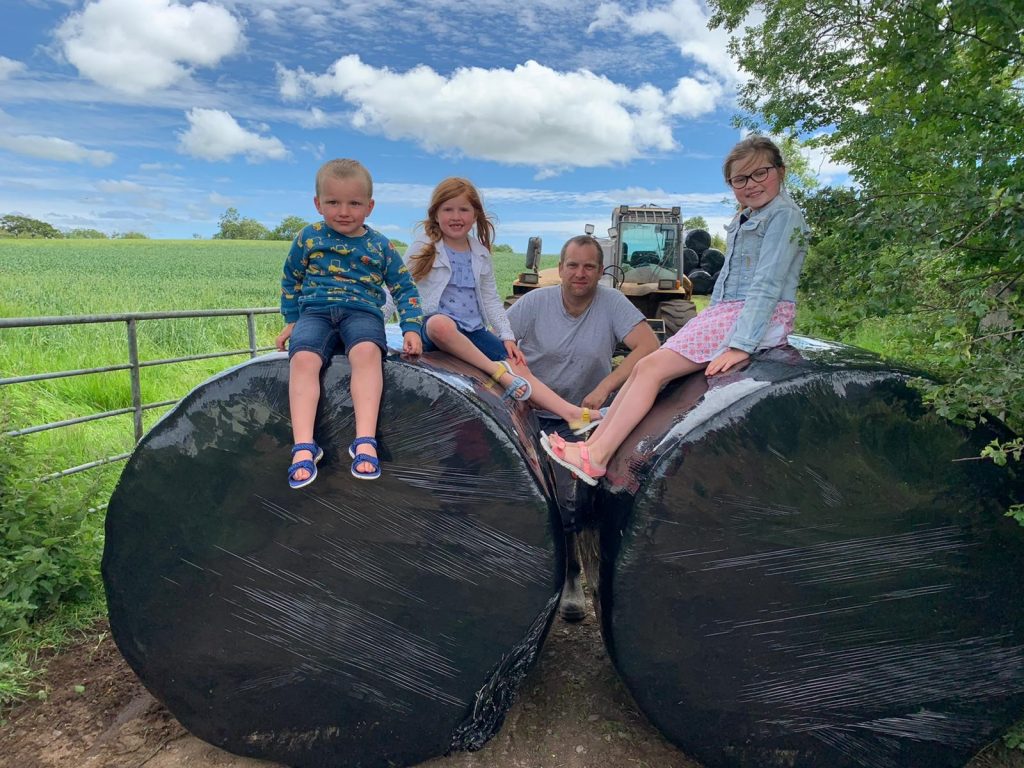Changing Direction – Taking the Robotic Route
July 31, 2020
Gordon Campbell farms 120 hectares on the outskirts of Ballymoney along with his father Wilson. They milk 160 cows alongside a poultry enterprise. Recently they have made the change from parlour to robots for milking. Kathryn George, Dairying Development Adviser, College of Agriculture, Food and Rural Enterprise (CAFRE) examines why they chose the robotic route and some of the demands associated with a change in milking system.
Sourcing competent and reliable staff to milk through the parlour was proving a challenge and the main driver for the change. This coupled with having a wife and young family that I wasn’t getting to spend enough time with. We needed a less labour intensive and more flexible farming system and robots seemed to provide that for us. Having researched and looked at a number of robotic systems the decision was made to install 3 GEA R9500 robots. It was all about finding a system that works for you as opposed to being tied to having to milk on a twice daily basis.
Gordon Campbell
Two robots were installed head to head in the original cubicle house and a third box in a more recent cubicle house across the yard. “No more moving cows for milking and having to clean an open yard was a further advantage of the robotic system” says Gordon.
But as well as advantages there have also been additional challenges. One such challenge Gordon is working through is spreading the calving pattern. When the robots were commissioned the majority of the cows were in late lactation as previously they had been an autumn/winter calving herd. There is now a plan to shift the calving pattern to having 20 cows per month calving whilst maintaining a break over the 3 summer months. Gordon has been using Genus RMS from 2015 to manage herd fertility and has uses a mating program to breed replacements from the top 50% of the herd ranked on PLI. The remainder of the herd is bred to Belgian Blue. Current fertility performance is good with a conception rate of 51% and a pregnancy rate of 35%.

Gordon, Sam, Katie and Emily Campbell bringing in the bales.
Production of quality forage is a cornerstone of the farm system with a 4 cut high dry matter silage system in operation. This year first cut was made on 1st May and subsequent 2nd cut made 5 weeks later in 1st week of June, with a nitrogen input of 50 kg/ha and 28m3 of slurry (2500gals/acre). A third cut was taken on 9th July and a final fourth cut is planned in August. Gordon prefers bales as he feels there is less spoilage and waste than with clamp silage. Currently the herd is averaging 32.2 litres/cow on 11 kg/cow/day of concentrate and achieving 8 litres from forage at 4.07% butterfat and 3.28% protein. Milk from forage is up 2 litres from this time last year and this will be a focus for management moving forward. The full yield benefits of the increased milking frequency that comes with robots is only likely to be seen as cows move into the next lactation.
The Campbell’s have embarked on a journey in going down the robotic milking route. They will continue to fine tune the system moving forward, concentrating on achieving a calving pattern to maximise efficient robot usage and producing quality forage to lift milk from forage. Gordon is the first to admit that there are pro’s and con’s to robots but is firmly convinced that they provide the path to a better quality of life for him.
